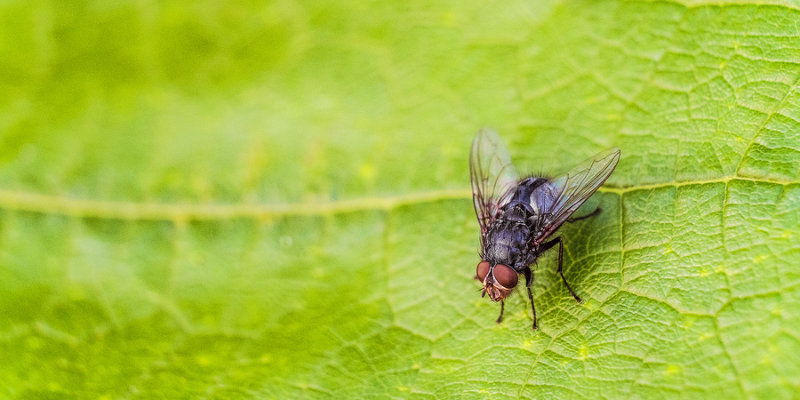Cluster flies, Pollenia rudis, are close relatives of blow flies and are similar in size to house flies (3/8-inch) but are more robust in body structure. They are nonmetallic gray, lack stripes on the thorax (segments with the wings and legs attached), and have yellow or golden hairs on the back, behind the head, and around the base of the wings. Cluster flies appear narrow when at rest because their wings completely overlap over their backs. The larvae are typical spindle-shaped maggots but are never seen because they develop as parasites in earthworms.

- Biology: The female flies mate in the spring and lay their eggs in soil crevices. The eggs hatch in three days and the larvae burrow into the bodies of earthworms where they develop. Development (egg to adult) requires 27 to 39 days. There are usually four generations per year.
- Habits: Cluster flies are annoying because they over winter as adults in the attics and wall voids of structures, especially older frame buildings. The common name of this species reflects its behavior of gathering in clusters before hibernation. They enter structures in early fall to seek shelter from cooling temperatures. Soon, a “cluster” of adult flies accumulates in wall voids and dark corners, under shelving, beneath curtains, and in other protected areas.
- On warm days in winter and spring, they annoy building occupants when they become active and crawl sluggishly over walls or windows. When the weather warms, the cluster flies emerge from their hiding places and either exit the building or enter interior areas. They are stimulated by warmth and are often found on the south and west sides of buildings. Once stimulated, cluster flies are attracted to light.
- Control: There is no effective control of the larval stage of these flies because they develop in earthworms. Control tactics for cluster flies should be initiated before they enter buildings in large numbers. The most effective long-term control in structures attractive to overwintering adults is to seal entry points in the walls and roof of the structure. To prevent entry into interior rooms, entry routes, e.g., around window pulleys, electrical outlets, switch boxes, and window and door frames should be sealed. Large accumulations of these flies can be removed with a vacuum cleaner.
- During the winter, a bare light bulb in an attic will cause the flies to die from cold exposure and exhaustion of their food reserves. Insect light traps can also be placed in attics but require frequent servicing. Cluster flies can not be controlled by disrupting the life cycle of the larvae (maggots) because they are parasitic on earthworms which are beneficial contributors to the environment. Residual applications of micro-encapsulated and wettable powder formulations should be applied in the fall to the exterior surfaces of structures in order to control these flies prior to entry.
At Longhorn Termite & Pest Control, we offer cluster fly control services for customers in Azle, Weatherford, Benbrook, and Graham, Texas.
